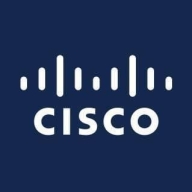
![OptiView XG [EOL] Logo](https://images.peerspot.com/image/upload/c_scale,dpr_3.0,f_auto,q_100,w_64/9REhZ7x8NbGM2hTAvHFVyuWf.png?_a=BACAGSDL)
Find out what your peers are saying about Zabbix, Auvik, Datadog and others in Network Monitoring Software.

| Company Size | Count |
|---|---|
| Small Business | 10 |
| Midsize Enterprise | 6 |
| Large Enterprise | 15 |
| Company Size | Count |
|---|---|
| Small Business | 7 |
| Midsize Enterprise | 8 |
| Large Enterprise | 26 |
The Cisco Nexus Dashboard Fabric Controller (NDFC) offers a comprehensive solution for managing Cisco NX-OS switches in hybrid-cloud environments, providing automation, visibility, and consistent operations. Designed to simplify and enhance data center management, NDFC integrates with Cisco Nexus Dashboard to streamline network connectivity, reduce deployment times, and ensure seamless transitions with minimal disruptions. Its modular architecture, new user interface, and support for non-Nexus OS platforms make it a robust tool for LAN, SAN, and IP Fabric for Media management. Additionally, NDFC enhances fabric reliability, automates workflows, and supports cloud connectivity with AWS and Microsoft Azure, making it ideal for businesses adapting to increasingly complex digital environments.
OptiView XG is the first network analysis tablet designed specifically for the network engineer. It combines critical functions necessary to automate root-cause analysis of both wired and wireless network performance issues – whether network or application related to reduce time for problem identification. OptiView XG supports repeatable, effective troubleshooting – whether pre- or post-deployment.
We monitor all Network Monitoring Software reviews to prevent fraudulent reviews and keep review quality high. We do not post reviews by company employees or direct competitors. We validate each review for authenticity via cross-reference with LinkedIn, and personal follow-up with the reviewer when necessary.